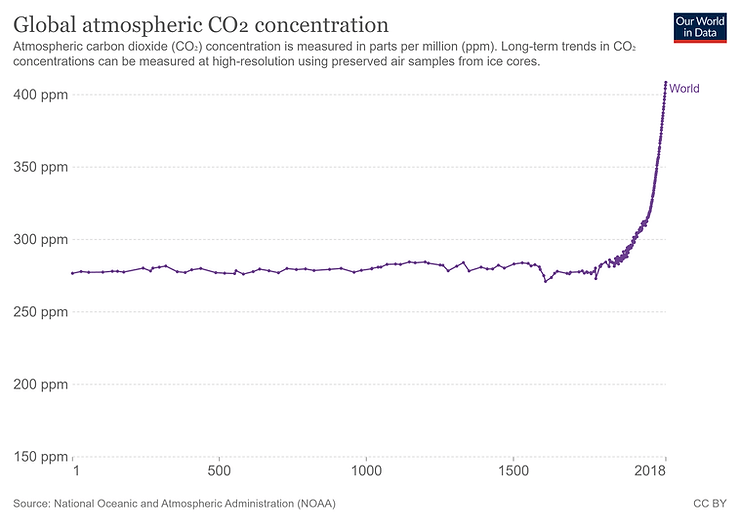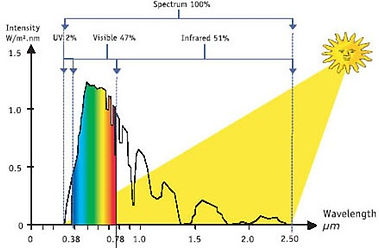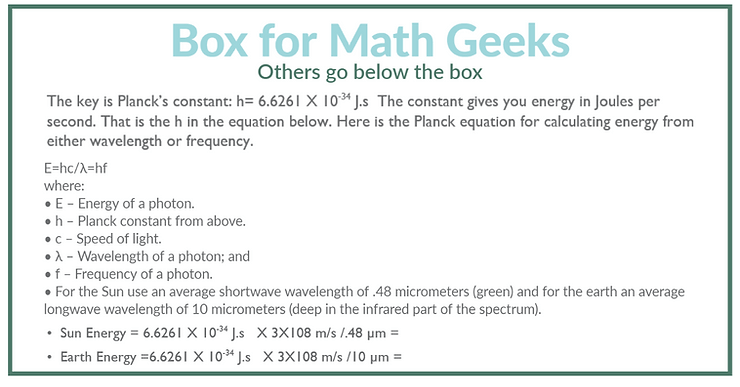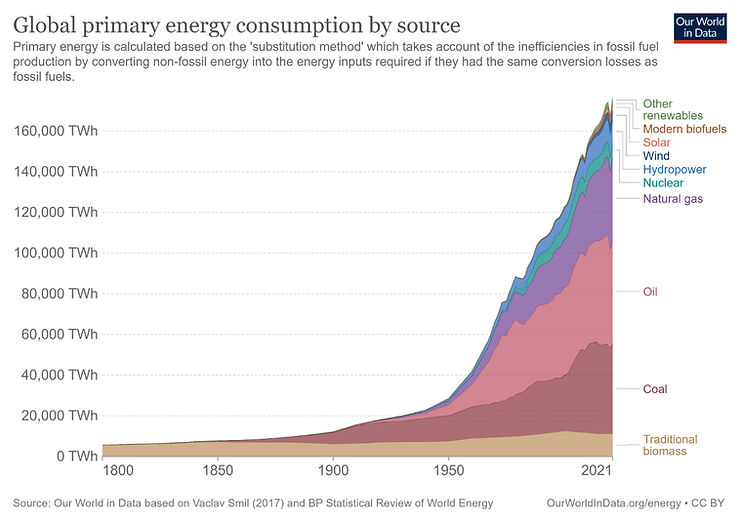What is “possible” and what is “impossible”?
In 1928 J.B.S. Haldane, a British scientist, wrote a paper titled “On Being the Right Size.” In it he shows how in the natural world, the parts of an animal body must be internally consistent. They must work together to service the whole. What happens in natural systems is a rule that can be extended to all systems. One of Haldane’s examples looks at how the fictional giants encountered by Christian, the hero in the book Pilgrim’s Progress by John Bunyan were impossible. The giants were in human form but were 10 times as tall as Christian, 10 times as wide and 10 times as thick. But if you multiply the dimensions of a three-dimensional object by ten, the volume and therefore the weight will be multiplied 10 x 10 x 10 = 1000. But the strength of the giants’ legs is dependent on the area of the cross-section of the large bones in the leg. The cross-section is two-dimensional so it will increase just 10 x 10=100 times. So, the fanciful giants were not physically possible. They had internal contradictions that made it impossible for them to live. Their legs would break on their first step.
“Scientists have estimated that there are around 8.7 million species of plants and animals in existence. However, only around 1.2 million species have been identified and described so far, most of which are insects. This means that millions of other organisms remain a complete mystery.” – National Geographic Society.
The amazing thing about all those species (see box) is that they are all internally consistent without contradictions like those found in Bunyan’s giants. The fact that they exist proves this lack of contradiction.
Haldane helps us think about what is “possible” and what is “impossible.” In nature, very heavy bodies have thick short legs like a hippopotamus or live in the ocean that buoys them up without legs like the giant blue whale. Otherwise, structural contradictions would make their bodies impossible. So, structures that are internally consistent survive and structures that are internally contradictory collapse.
When we talk about the “current system” headed for collapse what system are we talking about and what are its internal contradictions? Well, we are talking about the global socio-economic system. This system is driven by a consensus that GDP growth is without question positive. It feeds this growth with population growth, with the promotion of consumer consumption, and with a relentless pursuit by owners of capital searching for market and technological advantage.
There are seven structural contradictions that together assure the end of the current socioeconomic system:
1. When we use energy – it doesn’t disappear.
The first law of thermodynamics is that energy can neither be created or destroyed but only changed from one form to another. When we use up energy – for instance when our car runs out of gas or electrical charge, we gas it up or charge it up. We think that the energy we used has disappeared – it hasn’t. It has only changed from one form to another.
Example: We put gasoline in the tank of a car. The car feeds the gasoline and air into a cylinder and a spark from the spark plug lights it on fire. This chemical process of burning gasoline creates expanding gases that push against the piston in the engine that pushes against the crankshaft that eventually transfers the movement to the wheels. The tires on the wheels grip the pavement and move the car forward. This is motion against an opposing force – work. The opposing forces, in this case, are wind resistance and friction and when going uphill – gravity.
Notice that the gasoline had the capacity to do work which we call “energy.” That energy changed form from chemical energy to kinetic energy of gas molecules to kinetic energy of the piston and the crankshaft and the wheels that moved the whole mass of the car forward. But where did the energy go from there? We know from the first law of thermodynamics that it cannot be destroyed. So, the work of moving the car against resisting forces is just transferring the energy to other forms. In this case, the air the car runs into, heats up, as does the pavement as the tires hit it, as does the engine and the exhaust. The car itself acquires kinetic energy that is dissipated as heat when the brakes are applied. Notice in the end almost all the energy ends up as low-grade heat. None is lost. It is just converted to other forms of energy. And low-grade heat is just an agitation of the molecules of the air. And much of that heat in the atmosphere ends up in the ocean. Every process of energy use can be tracked like this one to end up as low-grade heat in the atmosphere
The first contradiction: At the car level, the car has a source of energy, a gradient, and a sink. No contradiction there. But at the global level, GDP growth – more cars, more energy, heats up the atmosphere and the oceans. Society is structured to grow but growth requires more energy and that energy ends up as heat. The atmosphere and oceans will absorb this excess heat but at the expense of making Earth uninhabitable.
2. Emissions are growing.
By now most people on Earth know the atmosphere and oceans are getting warmer and that this warming is creating disastrous weather events. It is also generally known that greenhouse gases are slowing the natural cooling of the earth. These gases in the atmosphere are preventing the heat from radiating into space. All that is well known. What is less well known is that the problem emissions are still increasing and that despite all the talk of reductions the problem is getting more severe. Look at the following graph.

The second contradiction: The growth of the world economy is creating the growth of carbon emissions. The emissions are holding in the growing heat by blocking the path to the natural sink for Earth – outer space – that used to take all Earth’s excess heat. By blocking its own natural sink, the system can’t survive.
3. The Sun and the Earth are no longer in balance.

In the picture above you see a graph of the wavelengths of the inbound energy coming from the sun. Notice that most of the energy comes in the visible range of light in different colors. When all those colors are merged, they look like white light. As an aside, this isn’t the sun being kind to humans by shining light we can see. Nor is it a coincidence. Our eyes developed on this earth to see the light that was being provided.
At risk of being irritating, here is the way one can figure out the balance between energy coming in from the sun and that going out from the Earth. Non-geeks should read on below the box because all the mathematics in the box just collapses into a very simple fraction but if you are so inclined the math is here to amuse you.

So, even without doing all the multiplication, we can see they are identical except the average Sun Photon Energy is divided by .48 and the average Earth Photon Energy by 10 so 10/.48 = 20.83. There are many other factors in the relationship between the Earth and the Sun, but this is a major factor.
The third contradiction: The incoming energy from the sun is 20.83 times more energy per photon than the outbound energy from the Earth, so the Earth needs to emit 20 times more low-energy photons than the high-energy ones coming from the sun. This wasn’t a problem for life on Earth until the industrial revolution. But now the lower energy photons have a harder time penetrating the CO2 blanket than do the higher energy photons thus contributing to the Earth heating up.
4. Global energy use continues to grow exponentially.
Since the 1950’s the global energy consumption is doubling about every 26 years. Human energy demand continues to rise dramatically. This story can best be told with a picture.

The fourth contradiction: At this rate by the end of the century we will be using eight times the energy we are using today. This energy cannot be destroyed or emitted into outer space, so it is headed for the atmosphere and ocean – sinks that are already beyond their carrying capacity.
5. Nuclear fusion is a chimera.
Nuclear fusion is yet another delusion of our current society. The headlines tell the story:
NUCLEAR FUSION REACTOR PROMISES CLEAN ENERGY
BREAKTHROUGH IN NUCLEAR FUSION ENERGY ANNOUNCED
NUCLEAR FUSION COULD CHANGE THE FUTURE OF CLEAN ENERGY
A CARBON-FREE SOURCE OF POWER
The fifth contradiction: Humankind has become enamored with the thought of unlimited clean energy. But we already know that heat is the problem, and all energy ends up as low-grade heat. Having massive new amounts of energy from fusion for growing GDP would simply speed up the climate crisis and the end of the current system.
6. Human body temperature has narrow limits around 37 degrees Celsius.
Humans can’t survive extremes of cold or hot. The term “wet bulb temperature” is a measure that combines humidity and temperature. If the atmospheric temperature is above 37 degrees Celsius with high humidity the body cannot cool itself by sweating. Death is the result. Most other creatures have similar narrow ranges in which they can survive. So, all of life on earth is at risk – not just human life.
The sixth contradiction: The current socio-economic system designed by humans is heating the only planet humans have to a point beyond which the human body cannot survive.
7. The climate crisis is on an exponential curve.
If you look at the charts in sections 2 and 4 you can see that energy use and CO2 concentrations are growing exponentially. In the Common Earth courses, participants take a piece of paper and fold it twice so that it is four pages thick. We assume that is about .5 millimetres thick. Then we ask them to guess the thickness if we could fold it forty more times. The answers usually come back between 10 centimetres and 5 meters. The correct answer is that it would reach around the world at the equator 6.8 times. This is to illustrate that very few of us have a good intuition when it comes to exponential growth. We don’t understand it so when we are told that the climate crisis is moving exponentially, we don’t realize that it means we need to move quickly to solve the issue. A loss of a year in the present is like losing 20 years later.
The seventh contradiction: Humans don’t come equipped to deal with exponential growth. The most common strategy relative to the climate crisis is to wait and see. That is not a good strategy when your house is on fire, and it is not a good strategy for the climate crisis. The contradiction is the difference between the strategy needed and the strategy we think is the prudent, conservative strategy.
So, what do we do?
It is impossible to see these seven contradictions clearly and to believe the current socio-economic system can survive. Just like the giants with legs that collapse under their weight, our society as presently structured, will collapse. In one sense, this seems like a doomsday message, but it is only a doomsday message if we fail to act quickly and massively – not to save the present system but to move humanity towards the next system. It is not too late to catalyze that action.
Some (particularly the wealthy) will be climate deniers and say the whole story is made up to take away our economic freedom.
Some will say if the situation is so bleak there is no use worrying about it and so let’s just live our lives.
Some will say it needs massive action from the government or corporations or the UN, so we need to leave it to them.
Others will believe they have the power to stop the madness by changing their lifestyle and behavior and by inviting others to join in that shift.
Stay tuned. This series of blog posts has looked at what is impossible. The next three instalments of this series will dive deeply into what is possible.
© 2023 – David Patterson – All rights reserved.


